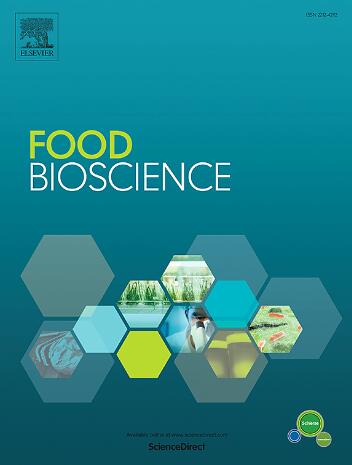Sensitive lateral flow immunoassay enabled by signal amplification strategy with high active oxidase-like nanozymes
IF 4.8
1区 农林科学
Q1 FOOD SCIENCE & TECHNOLOGY
引用次数: 0
Abstract
The emergence of nanozymes has significantly propelled the advancement of lateral flow immunoassays (LFIAs). Among these, atomically dispersed single-atom nanozymes are considered particularly advantageous for enhancing sensor performance due to their high density of active sites, superior catalytic activity, and favorable surface properties. In this study, we designed a colorimetric-catalytic signal amplification LFIA mediated by the Fe-Fe single atom nanozyme (Fe2NC) for the detection of capsaicin (CAP), a critical indicator of gutter oil that persists even after rough and fine processing. The Fe2NC exhibited high oxidase-like activity and was capable of directly catalyzing the conversion of O2 to reactive oxygen species (•O2− and 1O2) without the need of H2O2. The Vmax of Fe2NC was 3.73 × 10−7Ms−1 and the Km value was 0.199 mM according to the enzymatic reaction kinetics calculation. The colorless 3,3′,5,5′-tetramethylbenzidine (TMB) was oxidized to the blue ox-TMB by Fe2NC, which was then superimposed on the strip for signal amplification. It was evident that the color intensity of the T-line of Fe2NC-TMB-LFIA underwent noticeable attenuation when the CAP concentration was 0.05 ng/mL, and the color completely disappeared when the CAP concentration reached 1 ng/mL. Concurrently, the quantitative detection range of Fe2NC-TMB-LFIA was calculated to be 0.01–1 ng/mL. Compared to AuNPs-LFIA, the Fe2NC-LFIA and Fe2NC-TMB-LFIA demonstrated 2.5-fold and 10-fold improvements in sensitivity, respectively, and achieved a 2.5-fold and 5-fold reduction in antigen concentration. As a consequence, antigen cost was effectively decreased. This research offers a valuable reference for enhancing the sensitivity of immunoassay-based detection methods.
高活性氧化酶样纳米酶的信号放大策略使敏感的侧流免疫分析成为可能
纳米酶的出现极大地推动了侧流免疫分析(LFIAs)的发展。其中,原子分散的单原子纳米酶因其高密度的活性位点、卓越的催化活性和良好的表面特性,被认为在提高传感器性能方面具有特别的优势。在本研究中,我们设计了一种由 Fe-Fe 单原子纳米酶(Fe2NC)介导的比色催化信号放大 LFIA,用于检测辣椒素(CAP),辣椒素是地沟油的一个重要指标,即使经过粗加工和精加工后仍会存在。Fe2NC 表现出很高的氧化酶样活性,能够直接催化 O2 转化为活性氧(-O2- 和 1O2),而不需要 H2O2。根据酶促反应动力学计算,Fe2NC 的 Vmax 为 3.73 × 10-7Ms-1,Km 值为 0.199 mM。无色的 3,3′,5,5′-四甲基联苯胺(TMB)被 Fe2NC 氧化成蓝色的 ox-TMB,然后叠加在条带上进行信号放大。结果表明,当 CAP 浓度为 0.05 纳克/毫升时,Fe2NC-TMB-LFIA 的 T 线颜色强度明显减弱,当 CAP 浓度达到 1 纳克/毫升时,颜色完全消失。同时,计算得出 Fe2NC-TMB-LFIA 的定量检测范围为 0.01-1 纳克/毫升。与 AuNPs-LFIA 相比,Fe2NC-LFIA 和 Fe2NC-TMB-LFIA 的灵敏度分别提高了 2.5 倍和 10 倍,抗原浓度分别降低了 2.5 倍和 5 倍。因此,抗原成本得以有效降低。这项研究为提高基于免疫测定的检测方法的灵敏度提供了宝贵的参考。
本文章由计算机程序翻译,如有差异,请以英文原文为准。
求助全文
约1分钟内获得全文
求助全文
来源期刊

Food Bioscience
Biochemistry, Genetics and Molecular Biology-Biochemistry
CiteScore
6.40
自引率
5.80%
发文量
671
审稿时长
27 days
期刊介绍:
Food Bioscience is a peer-reviewed journal that aims to provide a forum for recent developments in the field of bio-related food research. The journal focuses on both fundamental and applied research worldwide, with special attention to ethnic and cultural aspects of food bioresearch.
 求助内容:
求助内容: 应助结果提醒方式:
应助结果提醒方式:


